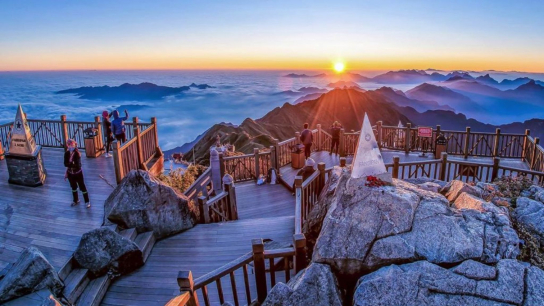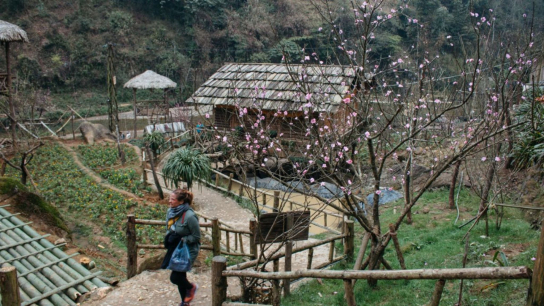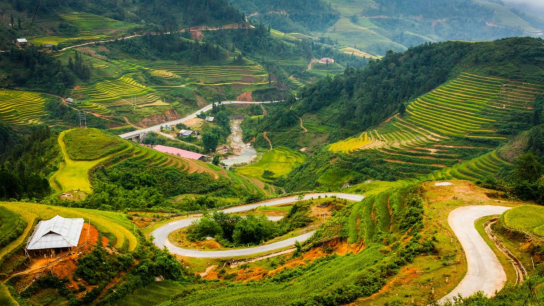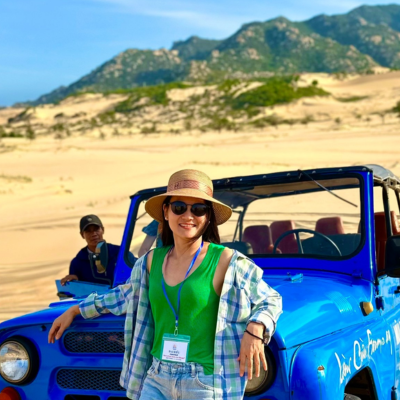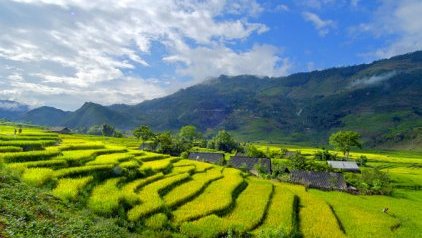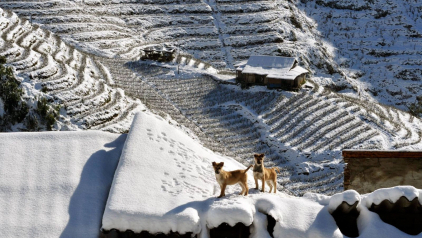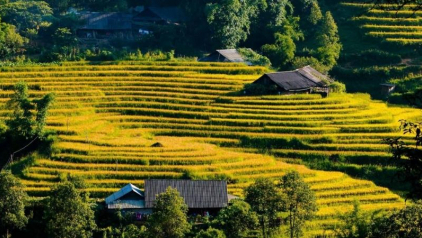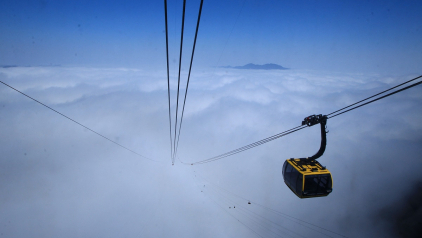Highlights of Sapa Weather & Temperature in February
February is a beautiful time to explore the misty highlands of Sapa, Vietnam. While the cold and foggy weather adds a dreamy charm to the mountains, it also calls for thoughtful preparation. This guide provides everything you need to know about Sapa, Vietnam's weather in February, including climate stats, travel experiences, festivals, and local advice.
- Highlights of Sapa Weather & Temperature in February
- Is February a Good Time to Visit Sapa, Vietnam?
- Top 6 Must-See Attractions in Sapa, Vietnam in February
- Best Way to See Sapa in February - 3 Days 2 Nights Itinerary
- Top Cultural Events in Sapa During February
- Local Tips for Traveling
- Most Asked Questions About Sapa February
Highlights of Sapa Weather & Temperature in February
In February, Sapa transitions from deep winter toward early spring. Temperatures remain low, especially in the early mornings and evenings, while mist often blankets the landscape.
Let's explore the February weather in detail below.
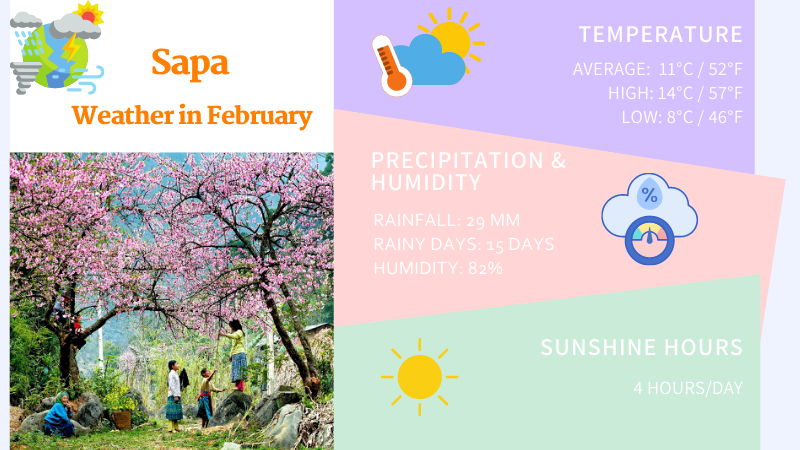
Average Temperature (Day & Night)
February in Sapa brings cool mountain weather, with daytime temperatures ranging from 10°C to 15°C. This refreshing chill is perfect for scenic walks and cozy café stops. At night, the mercury drops to around 5 - 8°C, though it can fall as low as 3°C or even lower in more remote areas or high-altitude locations like Fansipan Peak.
Travelers should pack thermals, scarves, and gloves, especially if venturing into higher terrains. Despite the cold, the temperature rarely becomes harshly uncomfortable and can be quite enjoyable with proper clothing, offering a crisp, invigorating mountain ambiance for your February journey.
Rainfall Statistics
Rainfall in Sapa during February is generally light and infrequent, with an average precipitation of 50 mm spread across 5 - 7 rainy days in the month. Most rain comes in the form of drizzles or misty showers that often accompany the morning fog.
Although heavy rain is rare, the consistent dampness can make trails slippery and the air feel colder. Waterproof jackets, hiking shoes with good grip, and umbrellas are essential for visitors. The subdued rainfall also allows for more outdoor activities and uninterrupted sightseeing, making February a decent time for trekking, photography, and cultural exploration.
Humidity Levels
Humidity levels in Sapa during February remain relatively high, averaging around 85%, due to lingering mountain fog and the moist atmosphere. While not as stifling as tropical lowlands, this persistent humidity contributes to a cool, damp feeling, especially in the early morning and late evening.
Clothes may take longer to dry, and dampness can intensify the perceived cold, so layering with moisture-wicking fabrics is recommended. The fog and moisture also give Sapa its trademark mysterious charm, wrapping rice terraces and valleys in a soft, ethereal glow - ideal for photographers seeking dramatic landscapes and dreamy scenery..
Air Quality and UV Index
Thanks to its altitude and lack of industrial development, Sapa enjoys excellent air quality in February. The Air Quality Index (AQI) typically ranges from 20 to 50, falling within the “Good” category. This makes it ideal for visitors with respiratory sensitivities or those seeking a natural escape from urban pollution.
Meanwhile, the UV index remains low to moderate (2 - 4), so sunscreen is only necessary if you plan to hike at high altitudes or spend extended hours outdoors. Overall, the crisp mountain air and gentle UV exposure create a comfortable environment for exploring Sapa without major health concerns.
Typical Weather Patterns
The typical February weather in Sapa features cool, foggy mornings, overcast skies, and a consistent chill throughout the day. Cloud cover often lingers, creating a surreal, mystical atmosphere, especially in the valleys. Mornings and late evenings can bring dense fog and sudden gusts of cold wind, so warm, windproof clothing is essential.
While snowfall is rare, light frost or ice may appear on Fansipan and nearby passes, offering a unique treat for visitors. February is also known for bien may (cloud inversions), especially visible from O Quy Ho Pass or the Cloud Yard, creating stunning, Instagram-worthy panoramic views.
Is February a Good Time to Visit Sapa, Vietnam?
Yes, February is a great time to visit Sapa if you're drawn to chilly air, peaceful surroundings, and mystical mountain landscapes. The region is often blanketed in romantic fog, making it a dream for photographers and those craving a tranquil retreat. With fewer tourists and the chance to witness light snow or frost on Fansipan, February offers a unique and serene experience.
However, it's not the best time for travelers hoping to see lush green or golden rice terraces, as the fields are barren in winter. The cold, damp weather may also be uncomfortable for some, and fog can limit visibility during hikes. Still, for those who appreciate quiet cultural immersion and cozy mountain vibes, Sapa in February holds a special charm.
Top 6 Must-See Attractions in Sapa, Vietnam in February
Here's a quick reference table of the best places to visit:
| Attraction Name | Distance from Sapa Town | Entrance Fee |
| Ban Pho Village | ~4 km | Free |
| Cloud Yard (San May) | ~3 km (near Fansipan cable car station) | ~3 USD (viewing deck ticket) |
| Sapa Love Market | In the town center | Free |
| O Quy Ho Pass | ~18 km | Free |
| Ta Phin Monastery Ruins | ~12 km | Free (small donation welcomed) |
| Hang Da Ancient Rock Field | ~15 km | ~1 USD |
Ban Pho Village (Red Hmong Community)
Just 4 km from central Sapa, Ban Pho is a quiet ethnic village home to the Red Hmong people. In February, misty hills and wooden stilt houses create a peaceful, almost haunting charm. It's an ideal spot for slow walks and authentic cultural encounters.

Take a glimpse of Red Hmong Community in Ban Pho Village
Cloud Yard (San May)
Located near the Fansipan cable car station, Cloud Yard is one of the best spots in Sapa for cloud-hunting. Arrive between 5:30 and 6:30 AM in February to witness the surreal “sea of clouds” rolling over the mountains. The chilly morning air and panoramic views make it an unforgettable experience.

Cloud-hunting in Sapa is an unforgetable experience
Sapa Love Market (Saturday Nights)
Held every Saturday night in Sapa town, the Love Market is a vibrant tradition where ethnic youth meet to sing, dance, and flirt. February, just after Tet, brings renewed energy and larger gatherings. It's a rare chance to witness romance and heritage blend in a real cultural setting.

The lively atmosphere in Sapa Love Market
O Quy Ho Pass
Stretching 18 km from Sapa, O Quy Ho Pass offers breathtaking mountain views, especially in early mornings. February often brings frost or even light snow, creating dramatic scenes for photographers. With its fog-covered cliffs and dizzying heights, this pass is a must-see for nature lovers.

The breathtaking view from O Quy Ho Pass
Ta Phin Monastery Ruins
About 12 km from Sapa, the ruins of this French-era monastery are draped in moss and surrounded by mist. February adds a mysterious atmosphere that makes the site both photogenic and spiritually quiet. Pair your visit with a soothing Red Dao herbal bath in nearby Ta Phin Village.

The mysterious vibe of Ta Phin Monastery Ruins
Hang Da Ancient Rock Field
Roughly 15 km from Sapa, Hang Da is a little-known archaeological site featuring ancient stone carvings. February's fog often adds a mystical layer to the already spiritual landscape. It is a peaceful destination for those looking to escape the crowds and connect with Sapa's deeper history.
Those who love adventure and nature will have a wonderful time in Sapa. Let's book a tour to this charming town now!
Best Way to See Sapa in February - 3 Days 2 Nights Itinerary
Day 1: Arrival & Light Exploration
- Travel from Hanoi to Sapa by train or limousine bus, then visit iconic landmarks like the Stone Church, Town Square, and local markets.
- Enjoy a light trek to Cat Cat or Ta Van Village, passing through terraced rice fields and experiencing ethnic village life.
- In the evening, savor grilled salmon, sturgeon hotpot, or thang co, then relax with locals over a cup of ruou tao meo (mountain apple cider).

Day 2: Fansipan Adventure & Local Festivals
- Ride the Fansipan cable car to the “Roof of Indochina” and enjoy breathtaking views - February may bring light snow or frost for a magical experience.
- Explore the mountaintop pagoda complex and, if your visit coincides with spring festivals like Gau Tao or Roong Pooc, join locals in dancing, khen music, folk games, and festive treats.
- In the evening, stay with a Hmong or Dao family in a traditional homestay to experience genuine local hospitality and culture.
Day 3: Local Shopping & Departure
- Explore Sapa Market or village stalls to shop for handwoven brocade, Shan Tuyet tea, and local spices - perfect souvenirs to take home.
- If time allows, visit a nearby ethnic village or viewpoint for one last scenic memory before continuing your Vietnam journey or heading back to Hanoi.
Top Cultural Events in Sapa During February
Gau Tao Festival (Hmong Ethnic Group)
- Date: 1st to 15th of Lunar New Year
- Meaning: Prayers for good health, luck, and prosperity
- Highlights: Bamboo pole climbing, Hmong dances, love-song contests
Held from the 1st to the 15th day of the Lunar New Year, Gau Tao is a major celebration among the Hmong people in Sapa. This vibrant festival is dedicated to praying for health, happiness, and good fortune through traditional games and performances.
Roong Pooc Festival (Giay People of Ta Van)
- Date: Full Moon of Lunar January
- Purpose: Blessings for crops and village harmony
- Activities: Xoe dancing, archery contests, and food-sharing ceremonies
Celebrated on the full moon of the first lunar month, Roóng Poọc is a spring festival unique to the Giáy ethnic group. It brings the community together to pray for a bountiful harvest and peace, with joyful dances, contests, and food-sharing rituals.
Tet Nhay (Dao Do Community)
- Date: 1st or 2nd day of Lunar New Year
- Meaning: Honoring ancestors and welcoming spring
- Features: Martial dances, ancestor rituals, festive costumes
Taking place on the 1st or 2nd day of Lunar New Year, Tet Nhay is a sacred event honoring ancestors in the Dao Do community. The celebration features ritual dances, martial arts displays, and vibrant traditional attire that showcase the Dao culture.
Le hoi Xuong Dong (Down-to-Field Festival)
- Date: Around the 6th - 10th day of Lunar New Year
- Purpose: Blessing the land for new crops
- Activities: Processions, buffalo plowing contests, folk songs
Observed between the 6th and 10th day of the Lunar New Year, the Le hoi Xuong Dong marks the beginning of a new farming season. Ethnic groups like the Hmong and Dao participate in lively processions, plowing ceremonies, and cultural performances to welcome a prosperous year.
Local Tips for Traveling
- Dress in Layers, Not Bulk
Sapa's February weather shifts quickly - mornings can be as cold as 5°C (41°F), but midday sun often brings warmth. Locals recommend layering instead of wearing one thick coat. Pack thermal wear, a sweater, and a windbreaker so you can adapt throughout the day.
- Chase Clouds at Sunrise, Not Sunset
February is prime time for cloud hunting in Sapa, especially from O Quy Ho Pass or Fansipan. According to locals, the best chance to see the stunning “sea of clouds” is between 5:30 and 6:30 AM, when the skies are clear above the mist.
- Bring Cash - And Smaller Bills
ATMs in Sapa are limited, and most stalls in ethnic villages don't accept cards or large denominations. Carry small Vietnamese dong bills (20,000 - 100,000 VND) for snacks, handicrafts, or market shopping.
- Don't Trek Alone - Especially in Fog
Mountain fog in February can roll in fast, reducing visibility and making trails slippery. Locals advise hiring a Hmong or Dao guide for longer treks - not just for safety, but also to learn about local culture along the way.
Most Asked Questions About Sapa February
1. Does it snow in Sapa in February?
While snowfall is rare, light snow or frost can appear at high altitudes like Fansipan Peak or O Quy Ho Pass, especially in early February. It's not guaranteed, but visiting during a cold front increases your chances of seeing it.
2. Will the trails be slippery or too foggy?
Yes, fog is common and can reduce visibility, while some trails become muddy and slick due to mist and light rain. It's best to wear proper trekking shoes and hire a local guide for added safety.
3. What should I pack for a February trip?
Bring layered clothing such as thermals, sweaters, and a windbreaker to adapt to changing temperatures throughout the day. Also pack gloves, waterproof shoes, lip balm, and small-denomination cash, as some villages don't accept cards or large notes.
4. Can I see flowers blooming in February?
Yes, peach and plum blossoms often start to bloom in late February, especially in villages like Lao Chai and Ta Van. These early spring blooms add a soft, colorful touch to the misty scenery.

Sapa in February offers a peaceful and mystical escape into the clouds. While the weather may be cold and the terraces bare, the romantic mists, cozy homestays, and rich ethnic culture make it a unique winter experience.
Ready to explore the charm of Sapa, Vietnam, in February? Book your dream trip with BestPrice Travel and let our experts handle the rest!
You might also like: Sapa weather in March
Van Anh
Image source: Internet


